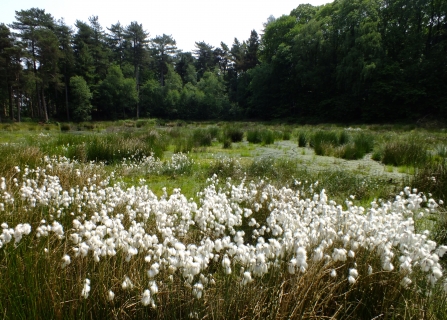Identified as an important area for wildlife, Cheshire Wildlife Trust has worked to deliver nature conservation improvements in partnership with the Forestry Commission, Natural England, WREN’s FCC Biodiversity Action Fund, Heritage Lottery Fund, the British Dragonfly Society and Cheshire West and Chester Council.
Between 2013 and 2017 Cheshire Wildlife Trust and the Forestry Commission restored 110 hectares of mossland habitat and began reintroducing the white-faced darter dragonfly, a species resident in the forest in years gone by. The Trust’s goal is to establish a large and interconnected population of this species by restoring connected pockets of habitat throughout the forest.
The team along with many volunteers have created open corridors between the peat basins, by clearing trees and creating dams in drains and pools to retain water.
“This project has become a large scale examplar of our landscape-scale approach to wetland conservation,” said Charlotte Harris, Chief Executive at Cheshire Wildlife Trust. “Before this restoration project many sites were not delivering the ecosystem benefits they could. Scrub-clearance, rewetting and invasive species control has improved important habitat for wildlife and already we are seeing a difference in the species recorded at the sites. It is fantastic that this project has been short-listed for a Best Practice Award.”

